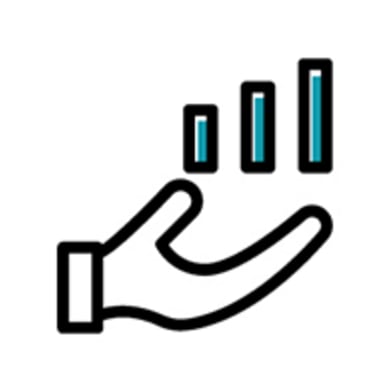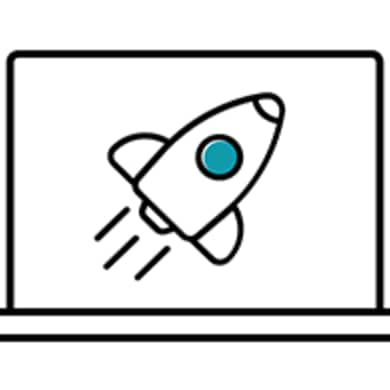
A Day at Work with an Ed Tech Investor
What does an ed tech investor at a venture capital firm do? Spend a day at work with James Kim of Reach Capital and find out.
James Kim (Rhode Island ’11) is a senior associate at Reach Capital, an education technology fund that was spun out of the NewSchools Venture Fund. It invests in ed tech companies at the seed stage (the first institutional money a venture or start-up raises).
Reach typically invests about $1 million in ventures that show “early validation” of their business models and market fit, Kim says. In return, Reach makes its money by getting about a 10-15% ownership stake in the company and a board seat.
Kim’s experience teaching math at the Juanita Sanchez Educational Complex in Providence, Rhode Island translates well to his kind of investing. Giving feedback to the rare bloviating entrepreneur who hasn't done the research is not that different from coaching students who come to class unprepared. And just as teachers need to be as interested in how to teach as they are in the content they teach, investors need to be as keen on taking pitch calls and analyzing financial metrics as they are in giving teachers better tools.
Kim was an assistant admissions director at Yale University before he went to Stanford University for a dual M.B.A. and master’s degree in education. While there, he got a taste for investing through internships at Owl Ventures and Northern Light Venture Capital. And he learned that “it takes a shocking amount of hustle” to be an investor.
So what does an ed tech investor do? We trailed Kim through one recent work day.
7:15 a.m.
Sunshine pours in the window as Kim does a 30-minute living room workout (pull-ups, push-ups, sit-ups, squats) before showering and dressing.
7:45 a.m.
He walks his rescue mutt Katsu and wolfs down breakfast (an Eatology paleo meal) before riding his electric scooter to the nearest BART station.

9 a.m.
Kim arrives at Reach Capital’s office in the heart of San Francisco. In place of desks, it has large group tables where colleagues vary their seating arrangements. “It’s very democratic,” Kim says. Jennifer Carolan, Reach’s co-founder and general partner (she’s also a former teacher) sits chatting with another staff member at an opposite corner of the table.
9:10 a.m.
Kim and his team gather in the conference room because Kim’s intern, a rising senior at MIT named Ashton, is presenting his analyses of Reach’s portfolio companies and their metrics of success. Also among the summer interns are students from a high school in Oakland across the bay and others from Daly City, just south of San Francisco.

10:00 a.m.
Kim and his colleague Shauntel Garvey met last week with a company looking to raise $2 million. He’s writing to say Reach won’t invest. The company is selling an income share agreement (ISA), meaning that it offers higher education students an alternative to loans. ISA providers front students’ tuition in exchange for receiving a percentage of their salaries for a number of years, if and when they reach an agreed-upon salary level.
Graduates who end up making high salaries pay out a lot (in some cases more than they would have with a traditional loan).Those who earn low salaries pay less or sometimes nothing. “The problem in my view is that if students have a choice between an ISA and a traditional loan, those who are confident they'll land a job and make a lot after graduation are incentivized to stick with a traditional loan,” Kim says. That’s a risk for the ISA provider.
12:00 p.m.
Lunchtime comes with a side of bonding. Today, the Reach Capital team grabs food and gathers for a team lunch, a conscious every-Wednesday effort to talk about non-work topics and socialize.

1:00 p.m.
An unexpected meeting pops up. Leaders of one of Reach’s portfolio companies (an online tutoring program) swing by the office on their way to Los Angeles to give an update on their performance. Back in 2016, Reach contributed to the startup’s $1.6 million seed round. But now the same company is raising a series A round ($6 million from investors in exchange for more equity). Given the stakes, the pitch team wants to get Reach’s take.
Kim is largely quiet for the first 30 minutes as he hears about the districts that are using their product. He suddenly probes two topics. How are their engagement metrics and profit margins?
1:50 p.m.
“Founders’ Day,” when Reach brings together all the companies in its portfolio to share knowledge, is fast approaching. Kim meets with his team to discuss plans. A colleague looks at early surveys and reports attendees are most interested in discussing sales and paid marketing tactics. Kim isn’t surprised. “They both drive revenue, which is the lifeblood of any business.”
2:30 p.m.
Kim has a moment of quiet to crunch numbers. Every quarter, Reach Capital reports to its funders (yes, they have their own investors) on how their investments are performing. Kim’s job? “I identify the amount that we invested in companies and how much they’re worth now,” he explains. “We reevaluate our companies every time they get a new investment.”
3:00 p.m.
Kim hops on a conference call with two entrepreneurs from Arizona. They’re looking for series A money to fund their higher education startup, which they believe will change the future of learning management systems. If a company falls even remotely within scope for Reach, Kim will chat with the founders
He decides by the end of the call that they aren’t a fit. He doesn’t hear solid data metrics or a solution to a major problem in higher education. “If you can’t tell me in a 30-second pitch what the product is, you need to go back and work on your pitch,” Kim says. But he’s glad he took the call. “We believe talent is equally distributed, but opportunity is not. I wouldn't want to miss the chance to meet a great entrepreneur just because they didn't come in through a warm intro, or they lacked polish,” he says.

4:00 p.m.
It’s intern Ashton’s last day, and Kim spends an hour sharing feedback and asking exit interview questions. He wants to hear whether the internship has interested Ashton in a career in venture capital.
6:00 p.m.
The day doesn’t end when Kim leaves the office. He typically has one or two work-related evening events each week. Next Wednesday, for example, Reach is hosting a happy hour at its office for people in the Bay Area edtech ecosystem. The next week, he’s attending a "Revamping America's Workforce" event hosted by Bloomberg Beta.
Tonight Kim heads home, ready to walk Katsu again. But his wife, Lou Kim (a Connecticut 2010 alum who is principal of Aspire Golden State College Preparatory Academy in Oakland), has already done that. Hence it’s dinner, a couple of hours answering emails, and an hour of Netflix before day is done.

Mary Jo Madda is Creative Strategy Manager for several education and diversity initiatives at Google. She was a director at ed tech news organization EdSurge, in which Reach Capital has invested.
Illustration by Elan Harris
Sign up to receive articles like this in your inbox!
Thanks for signing up!
Content is loading...


